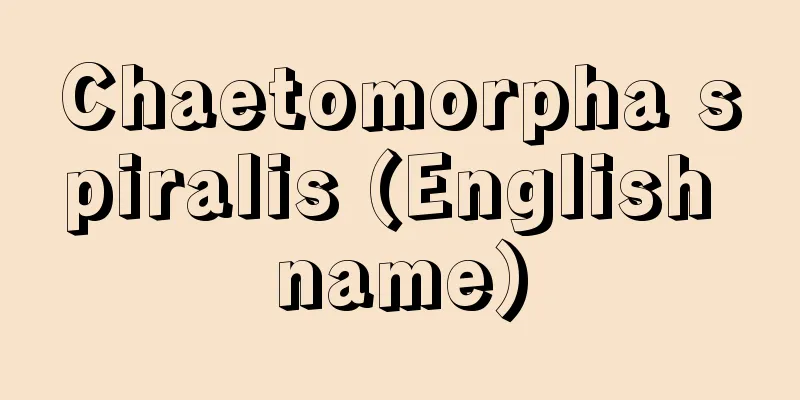Kimura Kenkado

|
A naturalist and man of letters in the mid-Edo period. Born on November 28, 1st year of the Genbun era in Kita-Horie, Osaka. His given name was Kokyo, his pen name was Seishuku, and he went by the pen name Sonsai. He was commonly known as Tsuboiya Kichiemon (Takichirō). His family had been involved in sake brewing for generations, and he named his study Kenkado after the roots of an old reed that came out of a well in the garden. He was fond of plants from an early age, and studied botanical science under the botanist Ono Ranzan, devoting his life to his studies. He had many hobbies, and studied painting of flowers and birds as well as landscapes under Ike no Taiga, and seal carving under Kofuyo, leaving behind works of gentle elegance. He was also knowledgeable about Sencha tea, and passed on the belongings of the tea merchant Baisao. He studied poetry and prose under Katayama Hokkai, and from around 1758 (the 8th year of the Horeki era) he held monthly poetry and prose meetings, laying the foundations for the Konton Poetry Society. He self-published elegant Japanese and Chinese books, but his vast collection of calligraphy, paintings, classic books, maps, and specimens was known both at home and abroad, and the Kenkado Diary, a list of visitors from near and far, is an excellent source of information that gives an insight into the literary fortunes of the time. He died on January 25th, 1712. He was buried at Daioji Temple in Obase (Esashi-cho, Tennoji Ward). [Norihisa Mizuta] "Kenkadō Diary" edited by Mitsutatsu Noma and Norihisa Mizuta (1972, Nakao Shōsendo Shoten) Source: Shogakukan Encyclopedia Nipponica About Encyclopedia Nipponica Information | Legend |
|
江戸中期の博物学者、文人。元文(げんぶん)元年11月28日大坂・北堀江に生まれる。名は孔恭(こうきょう)、字(あざな)は世粛(せいしゅく)、巽斎(そんさい)と号した。通称坪井屋吉右衛門(きちえもん)(多吉郎)。代々酒造業を営み、庭の井戸から出た古芦(あし)の根にちなんで、書斎を蒹葭堂と名づけた。幼時より植物に親しみ、本草学者小野蘭山(らんざん)に入門、生涯考索に努めた。多趣味で絵画は花鳥のほか山水を池大雅(いけのたいが)に学び、篆刻(てんこく)は高芙蓉(こうふよう)に就き、温雅な作を残した。また煎茶(せんちゃ)にも通じ売茶翁(ばいさおう)の遺品を伝えた。詩文は片山北海(ほっかい)に師事し、1758年(宝暦8)ごろより月例詩文会を催して混沌(こんとん)詩社の基礎をつくった。和漢の瀟洒(しょうしゃ)な書籍を自費出版したが、書画典籍や地図標本類の膨大な収集は内外に知られ、遠近よりの来訪者名簿『蒹葭堂日記』は当時の文運をうかがう好資料である。享和(きょうわ)2年1月25日没。小橋(おばせ)(天王寺区餌差町)大応寺に葬られた。 [水田紀久] 『野間光辰監、水田紀久編『蒹葭堂日記』(1972・中尾松泉堂書店)』 出典 小学館 日本大百科全書(ニッポニカ)日本大百科全書(ニッポニカ)について 情報 | 凡例 |
Recommend
Fukusaki [town] - Fukusaki
A town in Kanzaki County in south-central Hyogo Pr...
Infection - Infection (English)
It refers to when pathogenic microorganisms or sm...
Yellow Love - Kiiroikoi
…Due to poor health, he gave up his studies and s...
Stenosing Tenosynovitis - stenosing tenosynovitis
...When tendonitis becomes chronic, the tendon sh...
Okudake - Okudake
…It refers to the central mountainous region of Y...
Paper Mache Craft - Harikozaiku
A craft item made by layering paper on a wooden mo...
The Eighty Years' War
The Dutch War of Independence from the Spanish mon...
Yamanote
〘Noun〙① The direction of the mountains. The direct...
Masao Ohta
⇒ Mokutaro Kinoshita Source: Kodansha Digital Japa...
Tire
…the largest city in southern Lebanon on the Medi...
Gas sand - Gasusuna
...In recent years, various self-hardening molds ...
Eastbound - Azumakudari
Traveling from Kyoto to the eastern part of Japan...
Agricultural Association - Noukai
One of the major agricultural organizations befor...
Guitry and his son - Guitry
His father, Lucien Guitry (1860-1925), was a Frenc...
Tsuna Hills
Awaji Island, Hyogo Prefecture, is a landform-typ...









